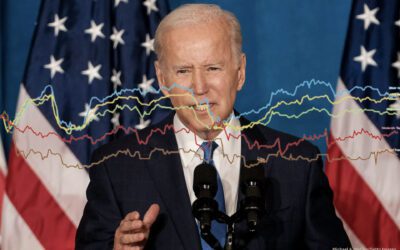Democrats are well positioned leading into next year’s elections if they give their base, particularly unmarried women, a reason to turn out and vote. As this research demonstrates, the promise of an agenda that addresses the real economy of everyday Americans and—this is an equally important piece—also provides them with a more responsive and equitable government gives key blocks in the Democratic coalition a greater stake in this election.
A new survey of 950 likely 2016 voters sponsored by Democracy Corps and Women’s Voices, Woman Vote Action Fund shows Hillary Clinton with a stable and impressive lead over prominent Republican contenders (Marco Rubio and Scott Walker). The Democratic margin in a named congressional vote, up significantly from the 2014 election, inches up higher, and has moved 11 points in the Democratic direction since last November.[1] This Democratic strength reflects the changing demographic reality of the new American electorate. Unmarried women, people of color, millennials—voters of the Rising American Electorate (RAE)—will make up a majority of voters for the first time in 2016. This new American majority carries with them a new American agenda.
The dominant reason for Democratic vigor in this survey is the deep backing that Clinton and the Democrats enjoy among voters in the Rising American Electorate, where Clinton matches Obama’s 2012 vote and exceeds his showing among white unmarried women. These voters sustain Democratic margins.
The Republicans also face a severe brand problem. They are defined, at least for now, by an increasingly unpopular Republican Congress and a Republican congressional leadership that has become a pariah among voters. Both Boehner and McConnell draw record unfavorable numbers in this survey, and the Speaker draws majority negative reviews. In addition, the Republicans have failed to adapt to the collapse in conservative culture. As others have highlighted, and as this survey reinforces, the number of voters who describe themselves as conservative has dropped sharply; voters’ reactions to pro-life groups, marriage equality and, to a lesser degree, the NRA, further reveals this ideological shift. The Republicans grow increasingly out of touch culturally with the country, a process likely accelerated by their nomination process.
Democrats also face their own challenges. Their base, specifically RAE voters and unmarried women, betray a huge disparity in interest and enthusiasm for participating in the 2016 elections compared to their more conservative counterparts. A 67 percent majority of non-RAE voters describe their level of interest in the highest terms (a “ten” on a ten-point scale). Among RAE voters, this number drops to 48 percent. These voters demonstrate real doubts about the ability of the government to deliver on the change they need. The disparity in interest among Democratic base groups is a direct threat to their strategy, regardless of the outcome in 2016.
Nonetheless, this survey produces a big jump in Democratic enthusiasm after voters hear an agenda that speaks to their lives and promises a government that serves their interests, particularly among Democratic base groups such as unmarried women and drop-off voters.
This agenda is big and progressive. It addresses an economy that still does not work for them and does not produce jobs that pay enough to sustain a family. Changes like equal pay for women, a solution to the problems within Medicare and Social Security, and a serious and bold investment in our infrastructure find traction not just among base groups, but among blue collar voters as well. But this agenda also confronts government that too often seems indifferent or even hostile to their interests.
In the focus groups preceding this survey, participants described themselves as entirely disconnected from their leaders, and described a leadership class more focused on lining their pockets than helping people like them. Progressive government reform that promises to rid the system of waste and duplication, simplify the tax code, make government more “user-friendly,” and eliminate subsidies for rich corporate interests, together with serious economic changes, energizes key base groups.
[1]National survey of 950 likely 2016 voters, 60 percent cell, June 13-17, 2015. This research was a joint project of Democracy Corps, Women’s Voices Women Vote Action Fund, and the Voter Participation Center. This research is informed by two sets of focus groups conducted in Jacksonville and Orlando Florida on May 19 and June 4, 2015. The Voter Participation research related to nonpartisan questions regarding policy topics. Important methodology note: In order to account for ever-changing demographics and accurately sample the full American electorate, for the first time, 60 percent of respondents in this survey were reached by cell phone.




